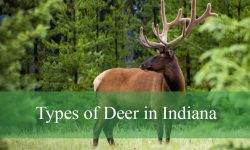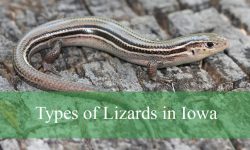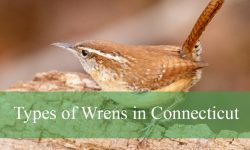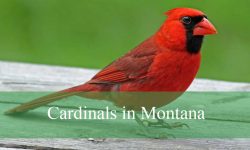Kentucky’s lush forests, warm summers, and humid climate make it a perfect home for a wide variety of insects. While most are harmless or even beneficial, the Bluegrass State also harbors several species that bite, sting, or inject venom capable of causing severe pain, allergic reactions, or even medical emergencies.
From Black Widow spiders and Bald-Faced Hornets to Fire Ants and Velvet Ants, many of these bugs look ordinary at first glance — yet their bites or stings can lead to intense pain or dangerous symptoms. Knowing how to identify them is the best way to stay safe while exploring Kentucky’s great outdoors.
In this guide, we’ll take a close look at 23 of the most dangerous bugs in Kentucky, complete with pictures, identification tips, behavior details, and safety advice.
Types of Dangerous Bugs Found in Kentucky
Black Widow Spider (Latrodectus mactans)
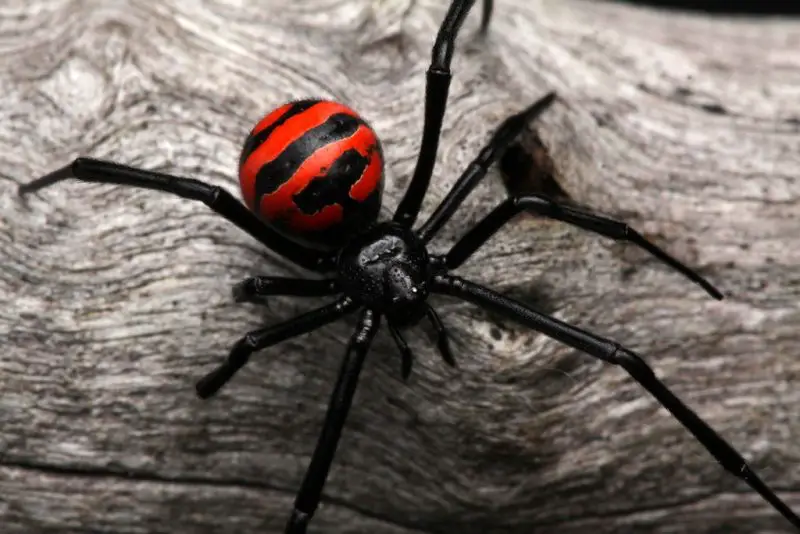
The Black Widow Spider is one of the most recognizable and dangerous arachnids in Kentucky. It features a glossy black body and a distinctive red hourglass marking on the underside of its abdomen. Adult females are typically about 1.5 inches (38 mm) including leg span, while males are much smaller and less venomous. Their shiny, rounded abdomens make them easy to identify compared to other dark-colored spiders.
Black Widows prefer dark, sheltered environments such as woodpiles, sheds, basements, and garages. They often spin irregular, tangled webs in corners or beneath debris where they remain hidden during the day. In Kentucky, they are commonly found during warmer months but can survive indoors throughout the year. Females rarely leave their webs unless disturbed or hunting for prey.
Behaviorally, they are shy and non-aggressive, usually biting only when threatened or accidentally pressed against the skin. Their venom contains neurotoxins, which affect the nervous system, causing severe muscle pain, cramps, sweating, and nausea within minutes of the bite. Most bites are not fatal but can be extremely painful and require medical attention, especially in children and the elderly.
Black Widows play an important ecological role by feeding on insects like flies and mosquitoes, but their potential danger to humans makes them one of Kentucky’s most feared spiders. To prevent encounters, people should wear gloves when handling outdoor debris and shake out clothing or shoes stored in dark places.
Brown Recluse Spider (Loxosceles reclusa)
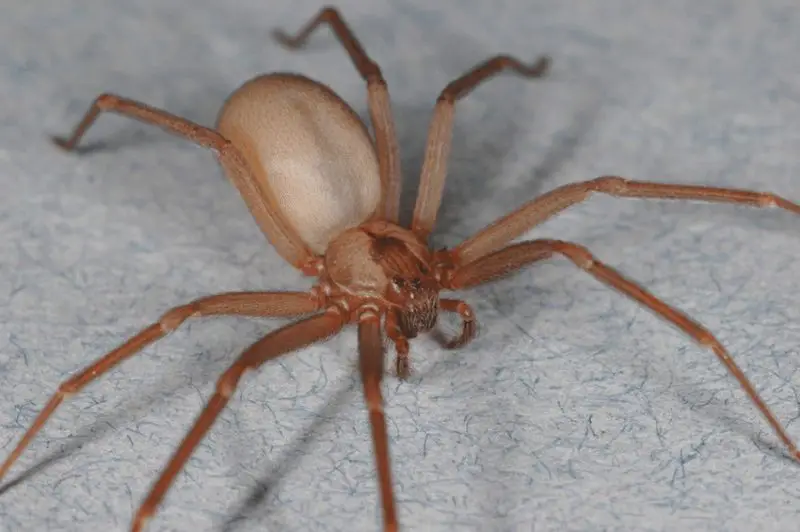
The Brown Recluse Spider is another highly venomous species native to Kentucky, well-known for its violin-shaped marking on its back. Its color ranges from light tan to dark brown, and adults measure about 0.25 to 0.75 inches (6–19 mm) in body length. Unlike most spiders, the Brown Recluse has only six eyes arranged in pairs instead of eight, a key identification feature.
Brown Recluses prefer quiet, undisturbed locations such as attics, basements, closets, cardboard boxes, and under furniture. Outdoors, they can be found in woodpiles or under rocks. They are nocturnal hunters that come out at night to feed on small insects. Kentucky’s warm and humid climate provides an ideal environment for their survival and reproduction.
The bite of a Brown Recluse is often painless at first, but within hours, it can cause redness, blistering, and tissue necrosis. The venom contains cytotoxins that destroy skin and soft tissue, sometimes leading to deep ulcers that take weeks to heal. In rare cases, systemic reactions like fever, chills, or hemolysis can occur, making medical attention essential after a confirmed bite.
Despite their fearsome reputation, these spiders do not attack humans unless provoked. Keeping storage areas tidy, sealing cracks, and shaking out clothes before wearing them are effective ways to reduce encounters. In Kentucky homes, they are among the most commonly reported dangerous spiders.
Velvet Ant (Dasymutilla occidentalis)
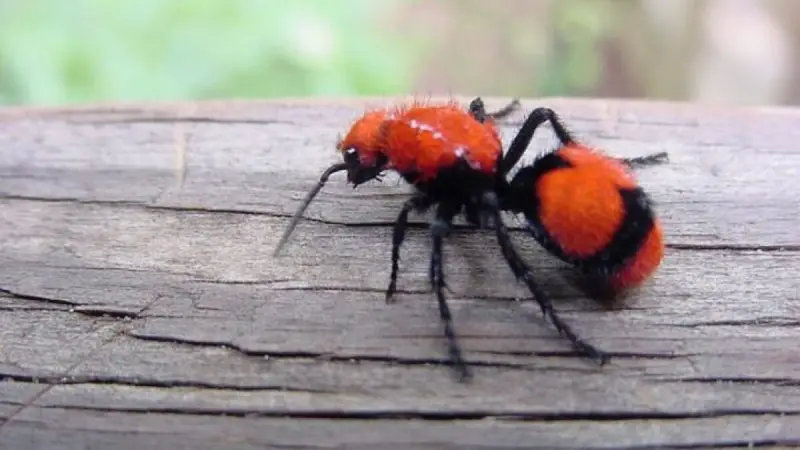
Often called the “Cow Killer Ant,” the Velvet Ant is not an ant at all but a wingless female wasp known for its intensely painful sting. It has a bright red-orange and black fuzzy body, making it highly visible and easy to identify. Adults measure about 0.75 inches (19 mm) in length, and their dense hair gives them a soft, velvet-like appearance — hence the name.
Velvet Ants are solitary insects that prefer dry, sandy soils, fields, and open areas across Kentucky. They are most active during hot summer days, often seen crawling quickly on the ground in search of ground-nesting bees or wasps, where females lay their eggs. Once hatched, the larvae act as parasites, consuming the host’s pupae inside their nest.
Their sting is one of the most painful in North America, though not fatal. The venom is not medically dangerous but can cause intense burning pain, redness, and swelling at the site of the sting. Because they do not sting repeatedly, the main risk comes from accidental handling or stepping on one barefoot.
Velvet Ants are beneficial to ecosystems by helping control populations of other wasps and bees. However, due to their painful sting, they are best admired from a distance. In Kentucky, they are often encountered in rural areas, along trails, or near sandy patches in gardens.
Eastern Yellowjacket (Vespula maculifrons)
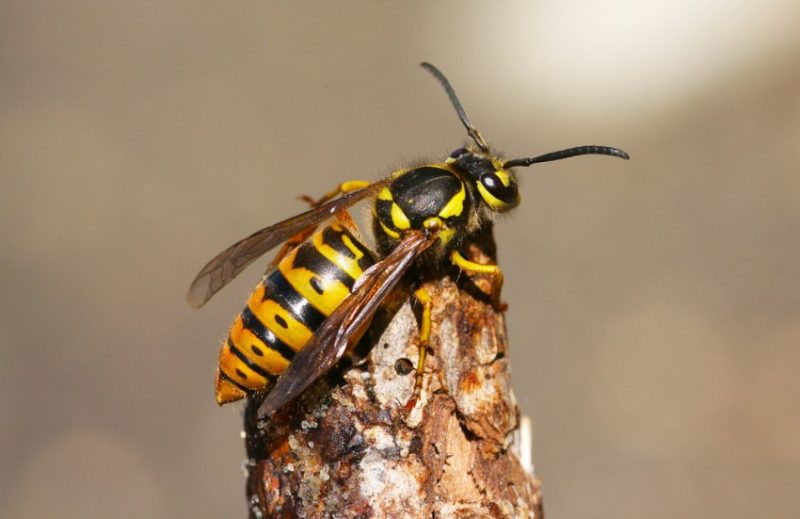
The Eastern Yellowjacket is one of the most aggressive and dangerous stinging insects found in Kentucky. It has a black-and-yellow striped body, resembling a small honeybee but with a smooth, shiny abdomen. Workers are about 0.5 inches (12 mm) long, while queens are slightly larger. Their colonies can contain thousands of individuals, making them a serious threat when disturbed.
Yellowjackets typically build underground nests, but they may also occupy wall cavities or tree stumps. They thrive in suburban and rural areas, scavenging for sugary foods and proteins. In Kentucky, they are most active from late summer to early fall, coinciding with outdoor picnics and garbage exposure. Their diet includes insects, fruit, and human food waste.
These wasps are highly defensive and will swarm aggressively if their nest is threatened. Unlike bees, yellowjackets can sting multiple times, injecting venom that causes sharp, burning pain, swelling, and itching. For individuals allergic to wasp venom, a single sting may trigger anaphylaxis, a life-threatening reaction requiring immediate medical attention.
Because of their aggressiveness, Yellowjackets are considered one of the most dangerous bugs in Kentucky. Preventive measures include sealing garbage cans, avoiding wearing bright colors or perfumes outdoors, and contacting professionals to remove underground nests safely.
Bald-Faced Hornet (Dolichovespula maculata)
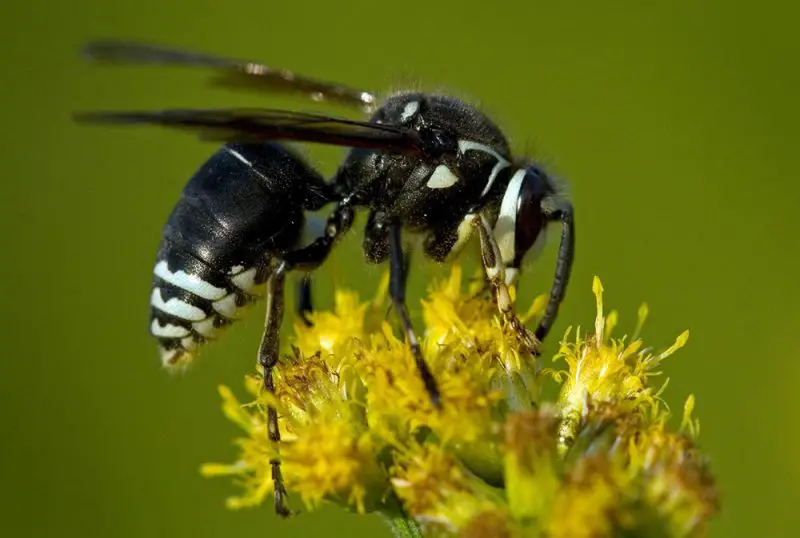
The Bald-Faced Hornet, despite its name, is actually a large species of yellowjacket wasp known for its black body with striking white markings on the face and thorax. It measures about 0.75 inches (19 mm) long and has a loud, intimidating buzz. Its paper-like nests, often the size of a basketball, hang from tree branches, eaves, or poles.
These hornets are highly social insects, living in colonies that can reach hundreds of workers by midsummer. They feed on other insects, nectar, and rotting fruit, playing a beneficial role in pest control. However, they are extremely territorial and will attack aggressively if someone approaches their nest too closely.
Their sting is very painful and delivers venom containing histamines and enzymes that cause immediate burning, swelling, and redness. Multiple stings can lead to dizziness, nausea, or severe allergic reactions. They can sting repeatedly, making large colonies especially dangerous to hikers, gardeners, and outdoor workers in Kentucky.
Bald-Faced Hornets prefer forested and suburban areas where trees and shrubs provide nesting spots. They are most active from July through September. People are advised to keep a safe distance from any visible gray paper nests and seek pest control help for removal. Despite their aggression, they are beneficial predators that help maintain insect balance in Kentucky’s ecosystems.
Paper Wasp (Polistes fuscatus)
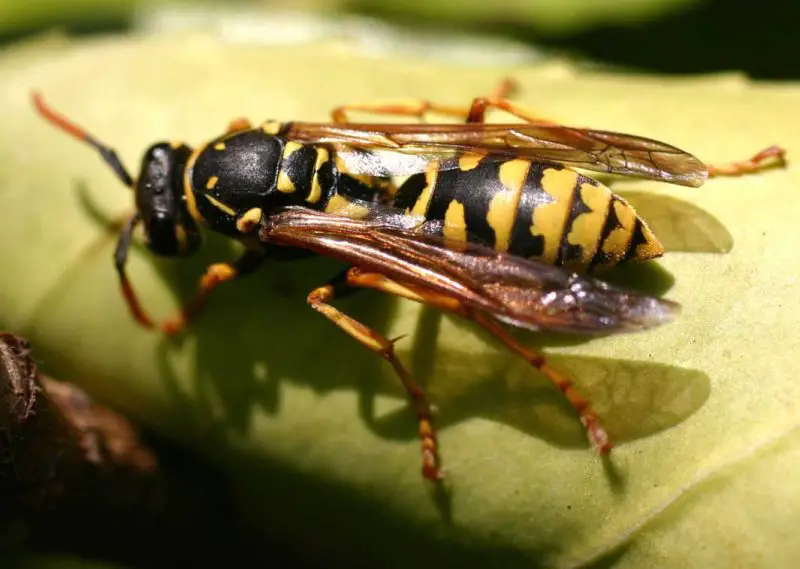
The Paper Wasp is a slender, long-bodied wasp easily recognized by its reddish-brown coloration, narrow waist, and dangling legs during flight. Adults measure between 0.5 to 0.8 inches (13–20 mm) in length. Their nests are small, umbrella-shaped structures made of papery material, usually suspended under eaves, decks, or fence rails.
Paper Wasps are semi-social insects that live in smaller colonies compared to hornets or yellowjackets. Each colony is led by a queen, with several workers maintaining the nest and foraging for food. They feed primarily on caterpillars and nectar, which makes them helpful for natural pest control in gardens and farms across Kentucky.
Despite their ecological benefits, Paper Wasps are territorial and defensive, particularly during late summer when colonies are large. Their sting is painful and sharp, often causing localized swelling and itching. For those allergic to wasp venom, a sting can lead to severe anaphylactic reactions, requiring immediate medical attention.
Paper Wasps prefer sunny, sheltered areas such as porches and sheds. To prevent infestation, homeowners should regularly inspect outdoor structures and safely remove small nests in early spring before colonies grow. While they’re less aggressive than hornets, disturbing their nests can still provoke an attack.
Fire Ant (Solenopsis invicta)
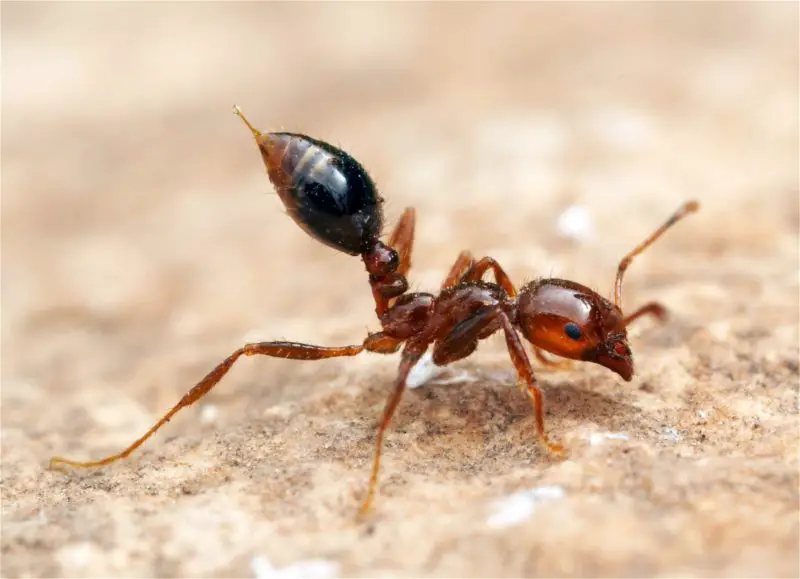
The Fire Ant is a small but formidable insect, recognized by its reddish-brown coloration and aggressive swarming behavior. Workers are about 1/8 to 1/4 inch (3–6 mm) long, while queens can be up to twice that size. Their nests appear as large soil mounds, sometimes over a foot high, scattered across lawns, fields, and sunny open areas.
Fire Ants are highly organized and territorial, building massive underground colonies containing hundreds of thousands of individuals. They prefer warm, open environments, and in Kentucky, they are most common in southern regions where the soil remains dry and compact. Colonies can spread rapidly, especially after heavy rains or soil disturbances.
Their sting is extremely painful, described as a burning sensation — hence their name. Each sting injects venom containing alkaloids that cause intense burning, swelling, and pus-filled blisters. Fire Ants often attack in large numbers, and for allergic individuals, multiple stings can trigger severe allergic or anaphylactic reactions that may become life-threatening.
People working outdoors or walking barefoot in grassy fields should be cautious around soil mounds. Avoid disturbing nests, and use proper insecticidal treatments or professional pest control when infestations occur. Fire Ants are among Kentucky’s most aggressive and dangerous insects to humans and pets alike.
Wheel Bug (Arilus cristatus)
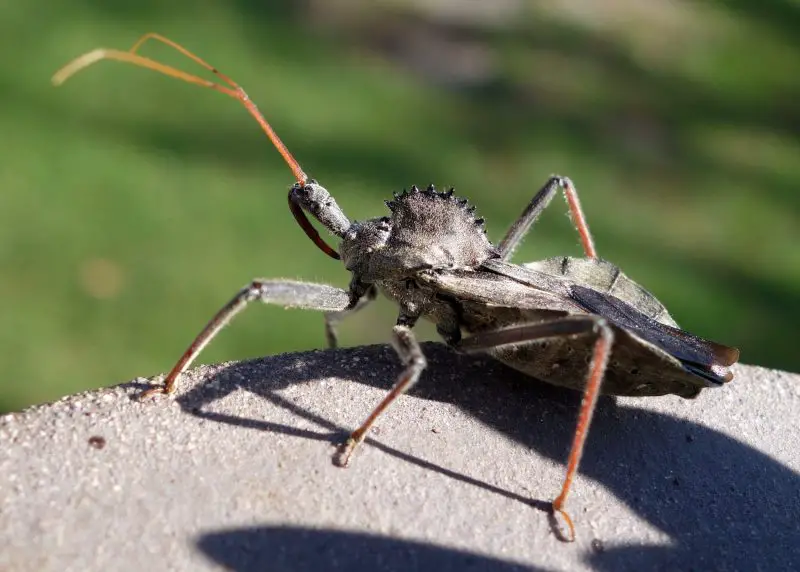
The Wheel Bug is a large predatory insect belonging to the assassin bug family, instantly recognizable by the spiny, cogwheel-like crest on its back. It is grayish-brown and measures up to 1.25 inches (32 mm) long, making it one of the largest true bugs in North America. Despite its intimidating appearance, it is generally solitary and slow-moving.
Wheel Bugs are beneficial predators, feeding on caterpillars, beetles, and other pest insects. They are commonly found in gardens, shrubs, and wooded areas throughout Kentucky, especially during late summer and fall. Because of their stealthy hunting behavior, they often go unnoticed until they bite in self-defense.
A Wheel Bug’s bite is painful and venomous, although not fatal. Using a sharp, needle-like beak, it injects a paralyzing enzyme into its prey — or a human’s skin if handled carelessly. The result is intense, burning pain followed by swelling and numbness that can last for several days. The wound may take weeks to heal completely.
While they pose little medical danger, the bite pain ranks among the most severe of all insect bites in the U.S. Gardeners and outdoor workers should handle them with caution, avoiding direct contact. These insects contribute positively to pest control, but their painful bite earns them a place among Kentucky’s most unpleasant bugs.
Giant Water Bug (Lethocerus americanus)
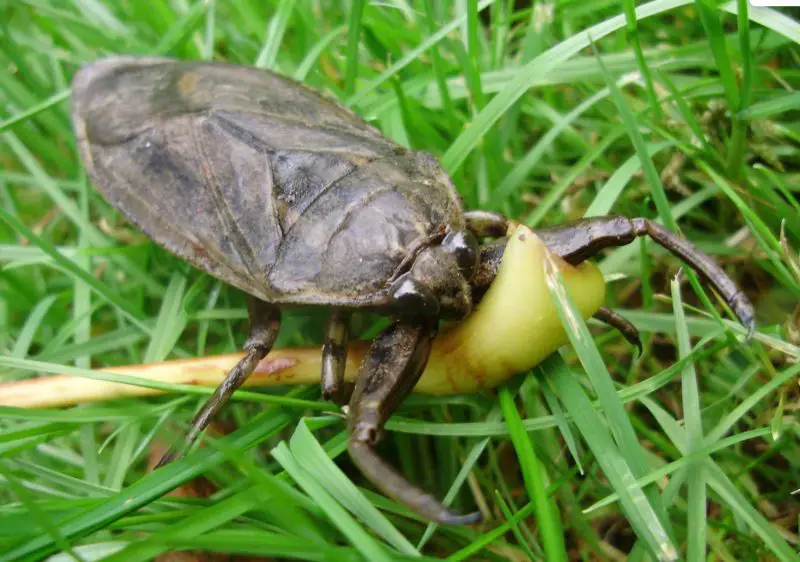
The Giant Water Bug, commonly known as a “Toe-Biter,” is a large aquatic insect known for its painful bite. It has a flat, oval-shaped brown body measuring between 1.5 and 2.5 inches (38–65 mm) in length. With strong forelegs designed for grasping prey and paddle-like hind legs for swimming, it is one of Kentucky’s largest and most intimidating bugs.
These bugs inhabit freshwater ponds, lakes, and slow-moving streams, where they feed on fish, frogs, and other aquatic invertebrates. They are nocturnal hunters and are often attracted to bright lights at night, which is how people commonly encounter them near porches or lakeside lamps.
The bite of a Giant Water Bug is extremely painful due to the injection of digestive enzymes used to liquefy their prey’s tissue. While the bite is not venomous or life-threatening, it can cause intense burning pain, swelling, and numbness lasting for several hours. Some victims report prolonged tenderness or blistering at the site of the wound.
Despite their fierce reputation, Giant Water Bugs play a key role in aquatic ecosystems by controlling populations of smaller aquatic creatures. Swimmers and anglers in Kentucky should avoid handling these insects directly, as they are quick to defend themselves when grabbed or stepped on.
House Centipede (Scutigera coleoptrata)
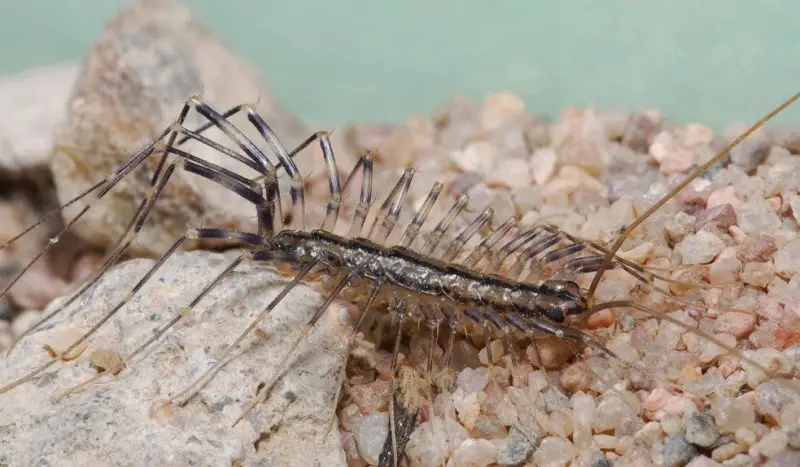
The House Centipede is a long, slender arthropod that can startle anyone who spots it scurrying across a bathroom or basement floor. Its body is grayish-yellow with dark stripes and carries up to 15 pairs of long, delicate legs, making it appear much larger than its actual 1 to 1.5 inches (25–38 mm) length. It moves extremely fast, capable of darting across walls and floors in seconds.
Native to the Mediterranean region but now widespread in the U.S., the House Centipede thrives in humid indoor environments such as basements, bathrooms, and laundry rooms. It prefers dark, damp areas where it can find prey like cockroaches, spiders, and silverfish. In Kentucky homes, they are common year-round, especially in older buildings with moisture problems.
Despite their alarming appearance, House Centipedes are mostly harmless to humans. They possess small venomous fangs used to subdue their insect prey, and while they can bite if handled or trapped against the skin, the bite rarely breaks the surface. Some people may experience mild pain, redness, or swelling, but serious reactions are very uncommon.
House Centipedes are beneficial predators that help control unwanted pests indoors. To prevent infestations, homeowners should reduce humidity levels, seal cracks, and eliminate clutter. Although their presence can be unsettling, they play an important role in natural pest management inside Kentucky homes.
Honey Bee (Apis mellifera)
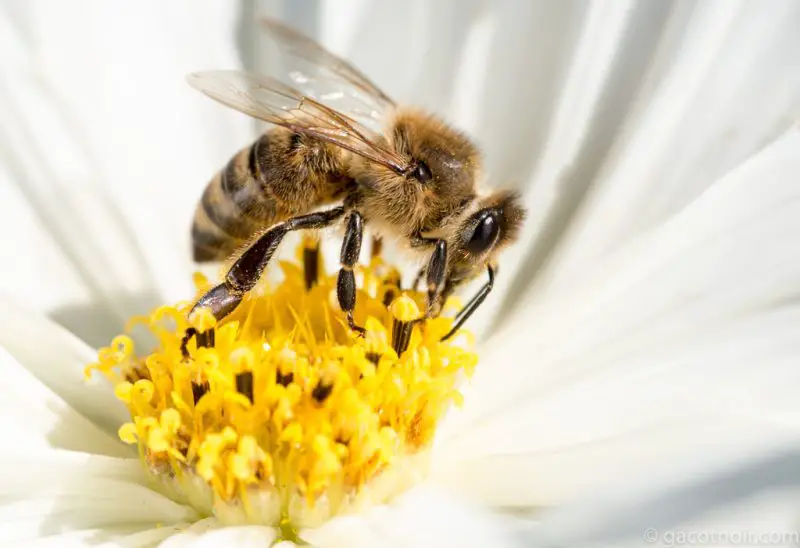
The Honey Bee is one of the most familiar and vital insects in Kentucky’s ecosystem. These bees are characterized by their fuzzy, golden-brown bodies with black stripes and measure about 0.5 inches (13 mm) long. Their bodies are covered in fine hairs that help collect pollen, giving them a soft, fuzzy appearance.
Honey Bees are social insects that live in large colonies of up to 60,000 individuals, typically housed in hives or hollow trees. They are highly active during spring and summer, foraging in gardens, meadows, and farmlands for nectar and pollen. Their importance as pollinators makes them essential for the reproduction of many crops and wild plants in Kentucky.
While Honey Bees are not naturally aggressive, they will sting in defense of their hive or themselves. The sting injects melittin venom, which causes immediate sharp pain, swelling, and redness. The stinger remains lodged in the skin, continuing to release venom until removed. For most people, symptoms subside within hours, but for those allergic to bee venom, a single sting can trigger anaphylaxis, a potentially fatal allergic reaction.
Honey Bees are federally protected in some cases due to their ecological importance. If a colony nests too close to a home, it’s best to contact a professional beekeeper for safe relocation rather than extermination. Despite their painful sting, Honey Bees are crucial allies in agriculture and biodiversity across Kentucky.
Carpenter Bee (Xylocopa virginica)
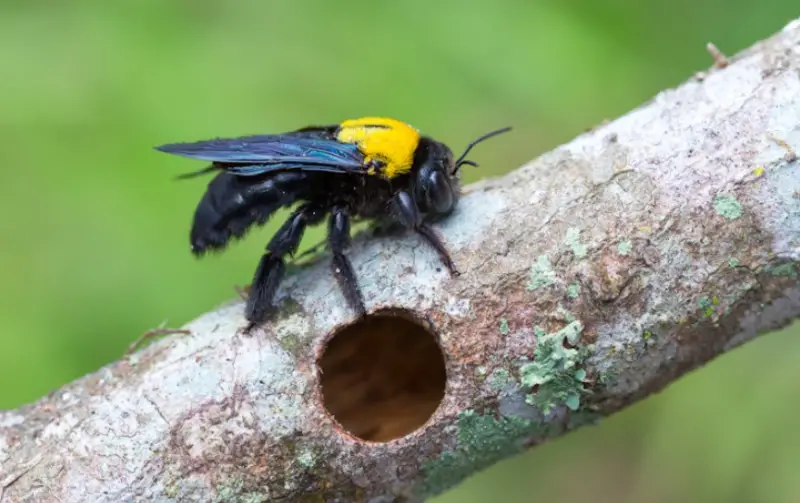
The Carpenter Bee is a large, robust insect often mistaken for a bumblebee. It can be identified by its glossy black abdomen and metallic blue or green sheen, distinguishing it from the fuzzy abdomen of true bumblebees. Adults measure about 0.75 to 1 inch (19–25 mm) in length and have powerful jaws used for tunneling into wood.
These solitary bees prefer to nest in unpainted wood, such as decks, fences, railings, and eaves. Unlike termites, they do not eat the wood; instead, they bore perfectly round holes to create nesting tunnels for their larvae. Carpenter Bees are common across Kentucky, especially in suburban and rural areas where wooden structures are abundant.
Female Carpenter Bees possess a stinger but are generally docile, stinging only if handled. Males, which cannot sting, often hover aggressively near people in territorial displays but are harmless. A sting from a female causes moderate pain, swelling, and redness, but serious medical issues are rare. The greater concern with these bees is the structural damage their nesting habits can cause over time.
To prevent infestations, homeowners can paint or seal exposed wood and use wood preservatives. Despite their occasional nuisance, Carpenter Bees play a positive role in pollination and are important for Kentucky’s native plant populations.
European Hornet (Vespa crabro)
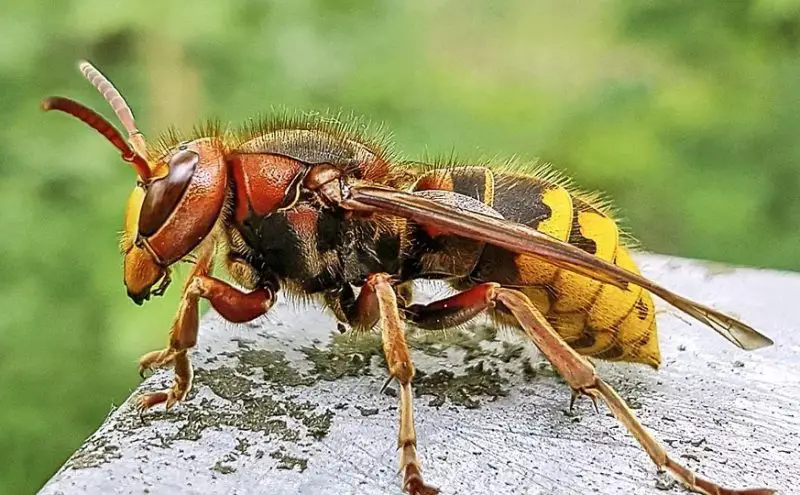
The European Hornet is the largest wasp species in Kentucky, known for its imposing size and loud buzz. Adults range from 1 to 1.5 inches (25–38 mm) long and display brown and yellow banding on their abdomens, with reddish-brown heads and thoraxes. Their intimidating appearance and strong flight pattern make them one of the most noticeable hornets in the region.
European Hornets construct large paper nests inside hollow trees, attics, or wall voids. They are active both day and night, hunting other insects such as flies, bees, and grasshoppers. In Kentucky, they are often encountered around outdoor lights, as they are one of the few hornet species attracted to artificial illumination.
These hornets are highly defensive of their nests and can sting multiple times. Their venom contains powerful compounds that cause severe burning pain, swelling, and inflammation. For allergic individuals, stings may result in dangerous allergic reactions including dizziness, difficulty breathing, or anaphylaxis. Even without an allergy, multiple stings can cause significant discomfort and localized tissue damage.
Though frightening, European Hornets are beneficial predators that help control pest populations. However, nests near human dwellings pose a serious safety concern. People should avoid approaching hornet nests and contact professionals for safe removal. Their size and aggressive defense behavior make them among the most dangerous insects in Kentucky.
Assassin Bug (Reduviidae family)
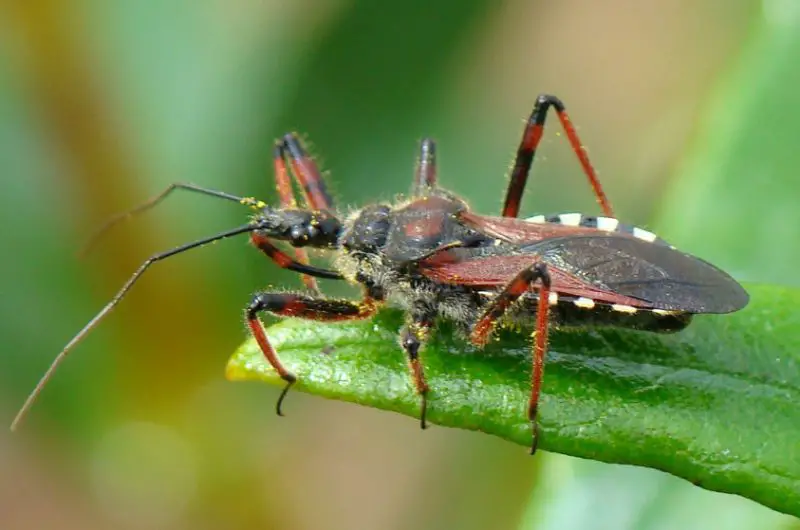
The Assassin Bug, belonging to the Reduviidae family, is a predatory insect known for its elongated body, narrow head, and distinctive curved proboscis used for piercing prey. Adults typically range from 0.5 to 1 inch (13–25 mm) in length, with colors varying from gray and brown to black. One of the largest species in Kentucky is the Wheel Bug, notable for its spiked crest.
Assassin Bugs are beneficial predators that feed on caterpillars, beetles, and other soft-bodied insects. They are commonly found in gardens, wooded areas, and near outdoor lights, especially during summer. While they play an important role in pest control, they can become a problem when handled or accidentally pressed against the skin.
Their bite is painful and venomous, caused by the injection of digestive enzymes that liquefy tissue. The resulting pain is sharp and intense, often compared to a severe bee sting. Swelling, redness, and numbness may persist for several days, though the bite is rarely dangerous unless it becomes infected.
Assassin Bugs are not aggressive toward humans and only bite when provoked. Wearing gloves while gardening and avoiding handling unfamiliar insects are effective ways to prevent bites. Though their bite is memorable, their ecological role as pest hunters makes them valuable members of Kentucky’s environment.
Red Paper Wasp (Polistes carolina)
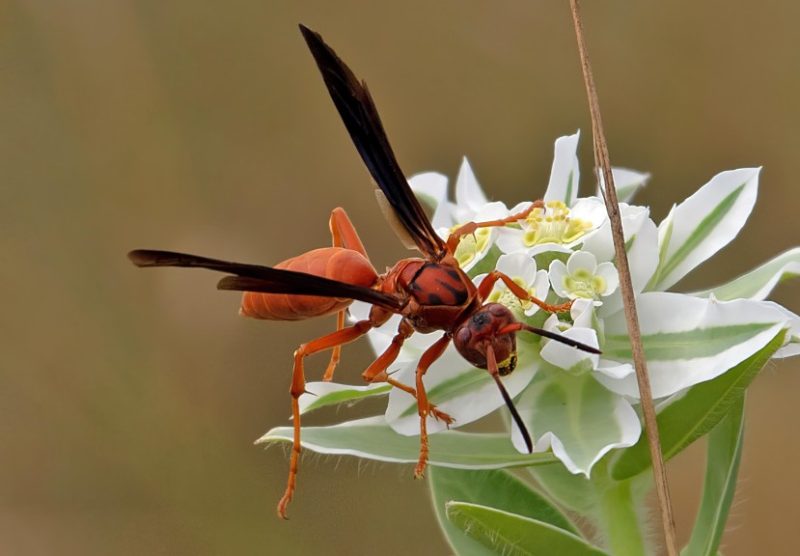
The Red Paper Wasp is a striking and easily identifiable wasp species found throughout Kentucky. It has a reddish-brown body with dark wings, and adults measure around 0.7 inches (18 mm) in length. Like other paper wasps, it has a narrow waist, long legs that dangle in flight, and a habit of building delicate, umbrella-shaped nests made from chewed wood fibers.
Red Paper Wasps prefer to nest in sheltered outdoor locations such as roof eaves, porch ceilings, window frames, and garden sheds. They are social insects, living in small colonies led by a queen. These wasps are important natural predators, feeding on caterpillars and other soft-bodied insects that damage crops and plants.
However, the sting of a Red Paper Wasp can be extremely painful. They inject venom that causes burning pain, swelling, and redness, and like other wasps, they can sting repeatedly. Most stings are not medically serious, but for people allergic to wasp venom, even one sting can cause anaphylaxis — a potentially life-threatening reaction.
In Kentucky, Red Paper Wasps are common in suburban areas and often encounter humans during warm months. Avoid disturbing nests or swatting at wasps, as sudden movement can trigger aggression. Regular inspection and early nest removal in spring can help prevent colonies from forming near homes.
Yellow Sac Spider (Cheiracanthium inclusum)
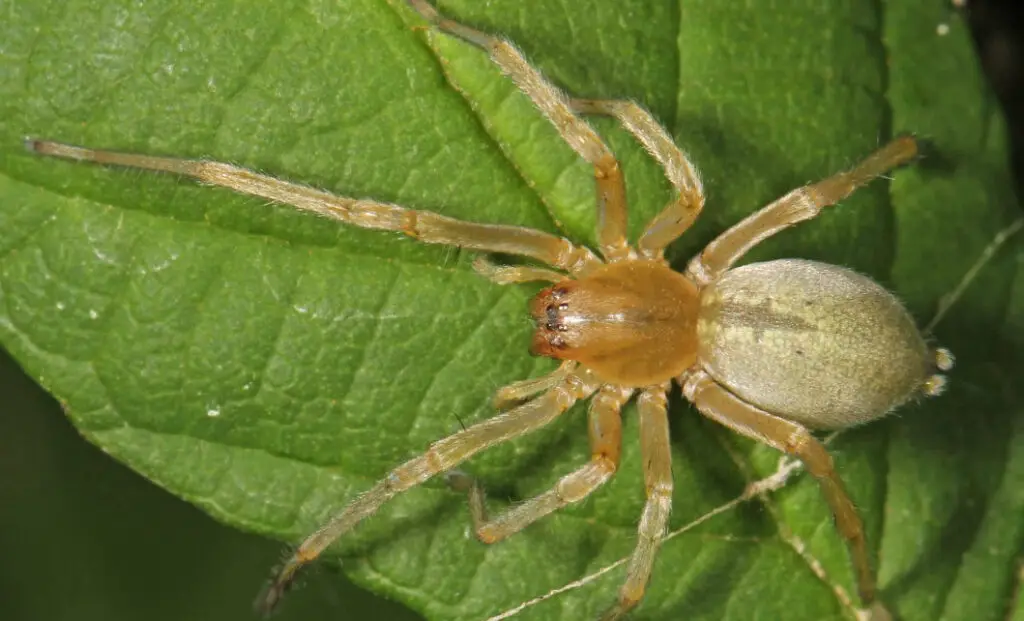
The Yellow Sac Spider is a small but medically significant spider found throughout Kentucky. Adults are about 0.25 to 0.4 inches (6–10 mm) long, pale yellow or cream-colored, and often mistaken for harmless house spiders. They have long legs and a distinct dark line running down their abdomen, with two rows of eight eyes that give them keen nocturnal vision.
These spiders are active hunters, not web trappers. They build small silk sacs or retreats in corners, folds of fabric, or behind pictures — hence the name “sac spider.” They prefer indoor environments like basements, attics, and ceilings but are also found outdoors in leaf litter or shrubs. Their activity peaks in late summer and fall when they wander indoors seeking warmth.
The bite of a Yellow Sac Spider is painful and venomous, though not life-threatening. Symptoms include burning pain, redness, and blistering, often mistaken for a Brown Recluse bite. In some cases, mild necrosis or slow-healing ulcers can occur. While bites are rare, these spiders tend to bite more readily than other species when trapped against the skin or bedding.
In Kentucky, prevention involves sealing entry points, shaking out clothing, and keeping storage areas clean. Although their venom is far less dangerous than that of the Brown Recluse, the Yellow Sac Spider remains one of the more medically important arachnids in the region.
Southern Devil Scorpion (Vaejovis carolinianus)
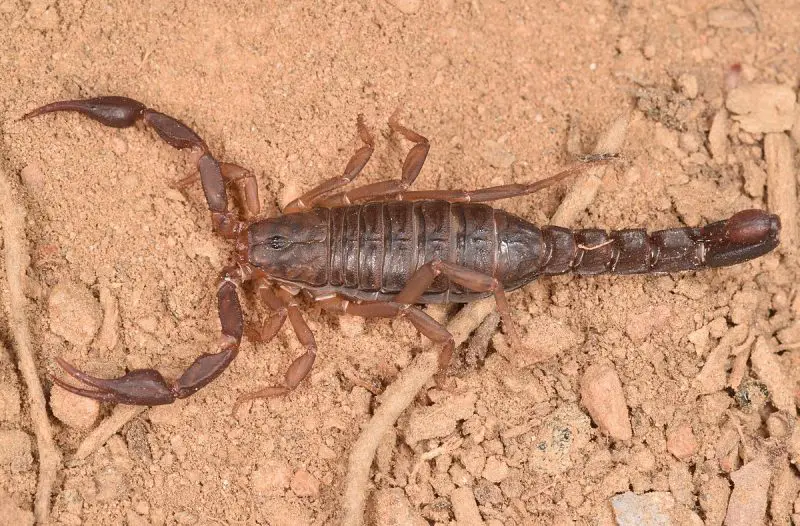
Kentucky’s only native scorpion, the Southern Devil Scorpion, is small but intimidating. Adults reach 1 to 1.5 inches (25–38 mm) long and have a dark brown to black body with pale legs and pincers. They are found mostly in southern and western Kentucky, especially in rocky or wooded areas.
These nocturnal predators hide under rocks, logs, or leaf litter during the day and come out at night to hunt insects and spiders. Their sting is painful but rarely dangerous, comparable to a bee sting, and causes localized swelling, burning, and redness. Allergic individuals may experience more severe reactions.
While not aggressive, they will sting if trapped or provoked. Homeowners in rural Kentucky sometimes find them in basements or firewood piles. Though rarely encountered, the Southern Devil Scorpion earns its name for the sharp sting it can deliver.
American Bumblebee (Bombus pensylvanicus)
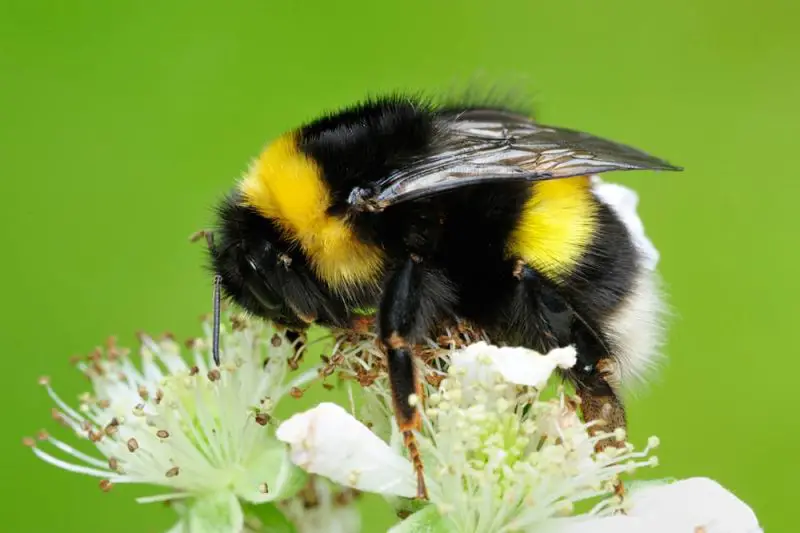
The American Bumblebee is a large, fuzzy bee with black and yellow bands and a rounded body. Workers reach 0.5 to 0.9 inches (13–23 mm) in length. They are found throughout Kentucky’s fields, gardens, and meadows, where they are essential pollinators.
Unlike honey bees, bumblebees can sting multiple times, as their stingers are smooth and don’t detach. The sting causes sharp pain and swelling, and allergic individuals are at risk of anaphylactic shock. Bumblebees are typically gentle, but will become defensive if their underground nests are disturbed.
Their ecological importance is significant, but it’s wise to be cautious around colonies. Avoid sudden movements or vibrations near nesting sites. Though not as aggressive as wasps, the American Bumblebee’s sting can be painful and medically serious for those allergic to bee venom.
Black-Legged Tick (Ixodes scapularis)
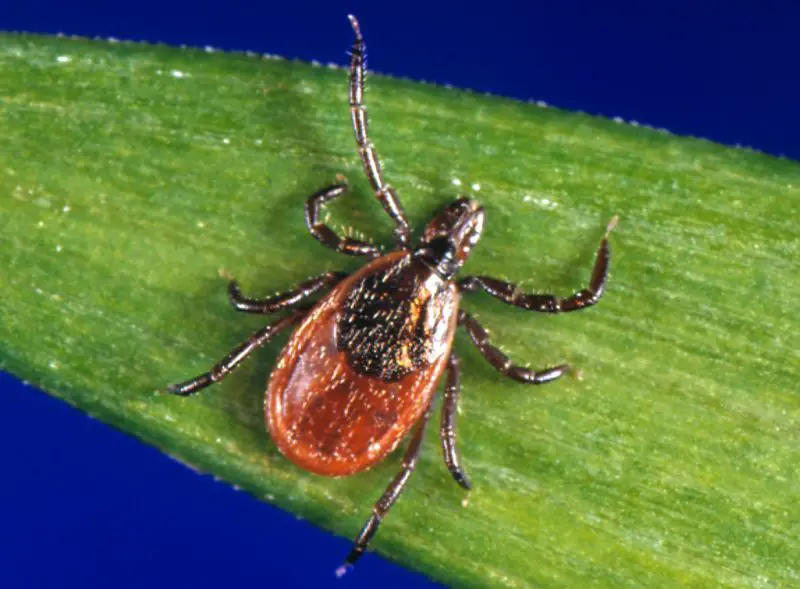
Also known as the Deer Tick, this small blood-feeding arachnid is a vector of Lyme disease, anaplasmosis, and babesiosis. Adults are about 3 mm long, reddish-brown, and become swollen and gray when engorged with blood.
They thrive in grassy and wooded areas across Kentucky, particularly in moist environments. Ticks attach to mammals, including humans, and feed for several days. If not removed promptly, their bites can transmit serious bacterial infections.
Tick bites are painless, but infected individuals may develop rashes, fever, fatigue, and joint pain. Prevention includes using insect repellent, wearing long clothing outdoors, and checking the body after hiking or gardening. Though tiny, the Black-Legged Tick is one of the most medically dangerous arthropods in Kentucky due to disease transmission.
American Dog Tick (Dermacentor variabilis)
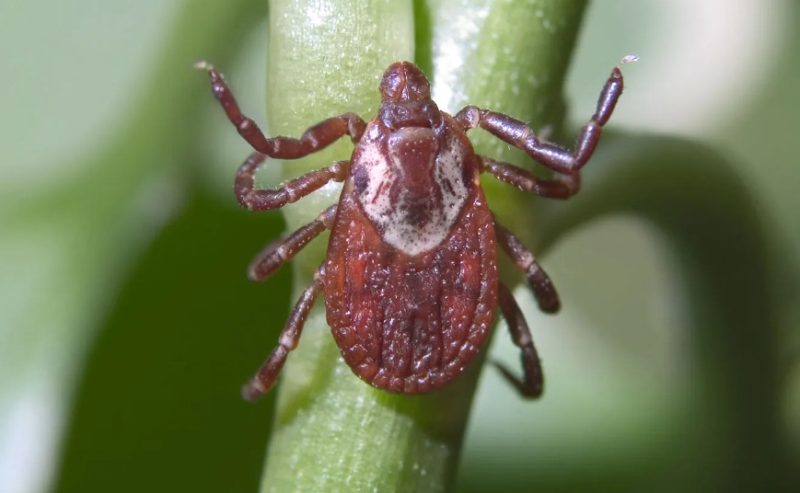
Another common tick species in Kentucky, the American Dog Tick is a vector for Rocky Mountain Spotted Fever and tularemia. Adults are 5 mm long, dark brown with gray markings, and are often found on dogs, deer, and humans.
They prefer grassy trails and fields, attaching to hosts passing by. While their bite is not venomous, the pathogens they carry can cause severe illness if untreated. Tick bites should be cleaned immediately, and embedded ticks removed carefully with tweezers.
American Dog Ticks are most active from April through August, the peak outdoor season in Kentucky. Preventive measures like tick repellents and frequent body checks are essential for hikers and pet owners.
Chigger (Trombiculidae family)
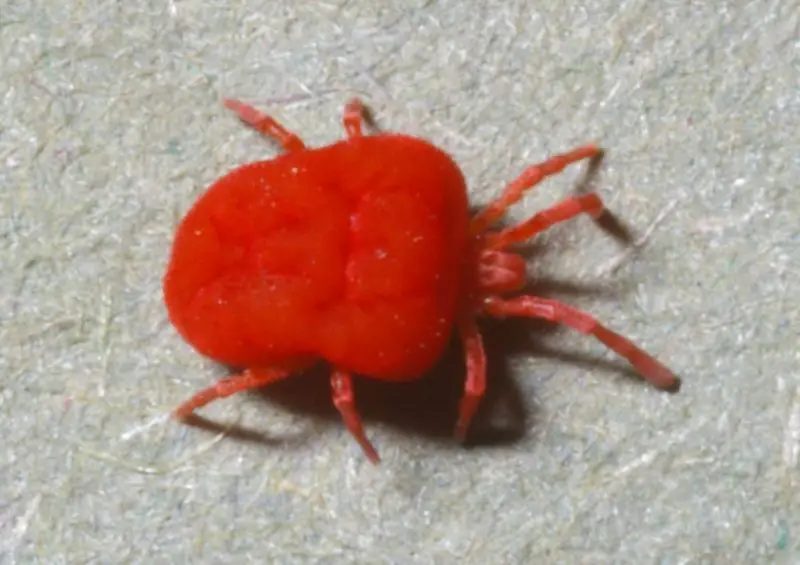
Chiggers are microscopic red mites that cause some of the itchiest bites in Kentucky. They live in grassy fields, forests, and riverbanks, especially in late spring and summer. Though not venomous, they inject digestive enzymes into the skin that cause intense itching and red welts.
Their bites usually appear around ankles, waistlines, and skin folds, where clothing fits tightly. The itching can last for days and may lead to secondary infection from scratching.
Chiggers are most active in warm, humid environments. To prevent bites, wear long pants, apply DEET-based repellents, and wash clothes promptly after outdoor activities. While not deadly, their irritation level earns them a spot among Kentucky’s most troublesome bugs.
Blister Beetle (Meloidae family)
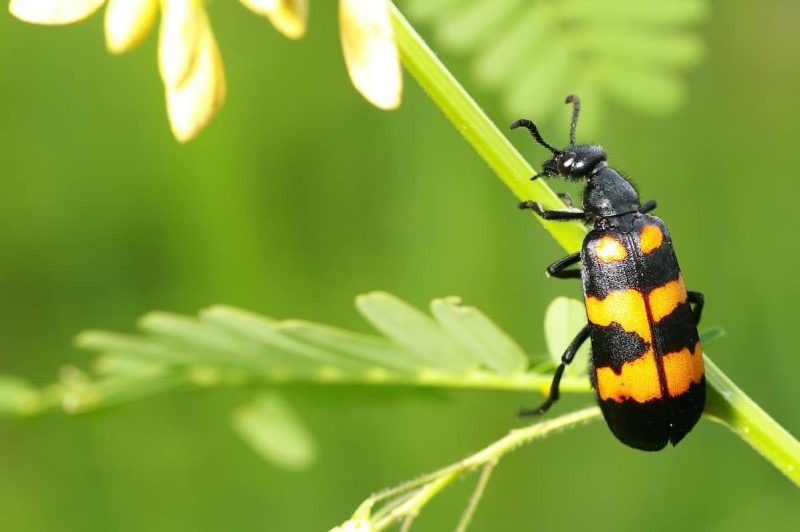
The Blister Beetle is a slender, soft-bodied beetle that can secrete cantharidin, a chemical that causes skin blistering on contact. Adults range from 0.5 to 1 inch (13–25 mm) long and vary in color — black, gray, or striped.
These beetles inhabit fields, pastures, and gardens, feeding on crops and flowers. Humans and animals can accidentally come into contact with cantharidin when crushing the beetles. The chemical can cause painful blisters and inflammation, and ingestion by livestock can be fatal.
In Kentucky, Blister Beetles are most common during mid to late summer. Handling them without gloves is not recommended. Their toxin makes them one of the few insects in Kentucky that can harm both humans and livestock without biting or stinging.
Horsefly (Tabanus atratus)
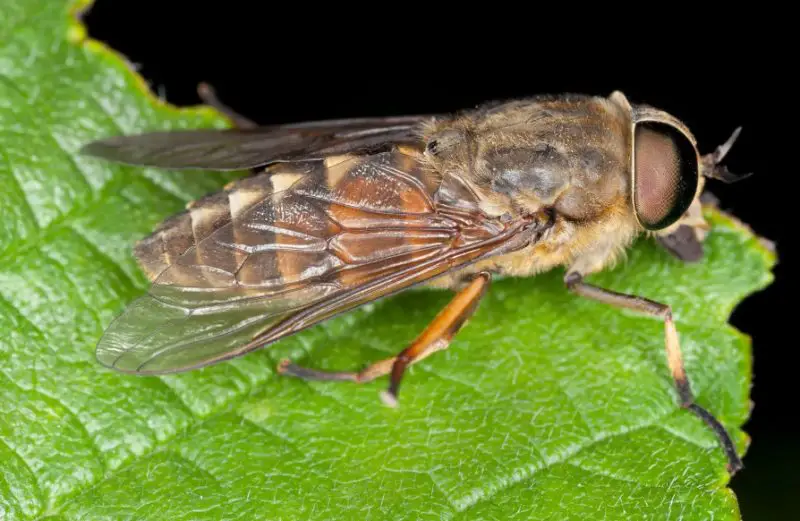
The Horsefly is a large, fast-flying insect with brilliant green or black eyes and a stout gray or brown body, measuring about 1 inch (25 mm) long. Females have scissor-like mouthparts designed to slice skin and feed on blood.
Their bites are extremely painful, leaving bleeding wounds and sometimes causing allergic swelling. In addition to their painful bites, horseflies can transmit diseases such as tularemia and equine infectious anemia among animals.
In Kentucky, they are found near wetlands, ponds, and pastures, especially during warm, humid months. Avoid wearing dark clothing or scented products outdoors, as these attract horseflies. Though not venomous, their bite pain and potential to spread infection make them dangerous to both people and livestock.
FAQs About Dangerous Bugs in Kentucky
Are there any poisonous bugs in Kentucky?
Yes. Kentucky is home to several poisonous and venomous bugs, including the Black Widow Spider, Brown Recluse Spider, Bald-Faced Hornet, and Velvet Ant (also known as the Cow Killer Ant). These species inject venom that can cause pain, swelling, tissue damage, or severe allergic reactions. Although fatalities are extremely rare, medical attention is recommended for any serious bite or sting.
What is the most dangerous bug in Kentucky?
The Black Widow Spider is often considered the most dangerous bug in Kentucky due to its powerful neurotoxic venom. Its bite can cause severe muscle pain, cramping, nausea, and sweating. Other contenders for this title include the Brown Recluse Spider (known for necrotic bites) and Bald-Faced Hornet, which can sting repeatedly and trigger life-threatening allergic reactions.
Does Kentucky have scorpions?
Yes. The Southern Devil Scorpion (Vaejovis carolinianus) is native to parts of southern and western Kentucky. While its sting is painful, it is generally not medically dangerous, producing effects similar to a bee sting. It prefers rocky forests, old logs, and humid basements in rural areas.
Are there venomous spiders in Kentucky homes?
Yes. The Brown Recluse and Black Widow spiders both live in or near homes across Kentucky. The Brown Recluse hides in attics, closets, or storage boxes, while the Black Widow prefers dark corners, garages, or woodpiles. It’s best to shake out clothing or shoes before wearing them and seal gaps around doors and windows.
Do fire ants live in Kentucky?
Yes, but mainly in southern and western Kentucky. Fire Ants build large mound nests and are known for their painful, burning stings. They often swarm in groups, delivering multiple stings that can cause itchy pustules or allergic reactions. Severe infestations require professional pest control.
Are there any dangerous ticks in Kentucky?
Absolutely. The Black-Legged Tick (Deer Tick) and American Dog Tick are both found in Kentucky. They can transmit Lyme disease and Rocky Mountain Spotted Fever, respectively. Ticks are most active from spring through summer, especially in wooded or grassy areas. Always check your body and clothing after outdoor activities.
Can you find centipedes in Kentucky homes?
Yes. The House Centipede (Scutigera coleoptrata) is common indoors, especially in basements, bathrooms, and damp areas. While they possess venom for subduing prey, their bite is not dangerous to humans. They actually help by controlling pests like roaches and spiders.
What should I do if I get bitten or stung by a bug in Kentucky?
First, clean the wound with soap and water. Apply a cold compress to reduce pain and swelling. If symptoms worsen — such as difficulty breathing, dizziness, fever, or severe swelling — seek immediate medical attention. People with insect allergies should always carry an EpiPen if prescribed.
Are wasps and hornets aggressive in Kentucky?
Yes. Species like the Eastern Yellowjacket, Bald-Faced Hornet, and European Hornet are highly territorial and can sting multiple times. They become more aggressive in late summer, when colonies are largest. Avoid loud movements near nests, and hire professionals for safe nest removal.
How can I prevent dangerous bugs around my home in Kentucky?
- Seal cracks and entry points in walls and doors.
- Keep firewood and debris away from the house.
- Trim vegetation around the foundation.
- Avoid leaving food or drinks outdoors.
- Use pest control treatments in spring and summer to reduce nests and infestations.
Preventive maintenance is key to keeping spiders, wasps, and ants away from homes and yards.
Are chiggers dangerous in Kentucky?
Not venomous, but chiggers cause extremely itchy bites due to enzymes injected into the skin. These microscopic red mites are active in grassy areas during warm months. While their bites don’t spread disease, scratching can lead to skin infections. Showering and washing clothes immediately after outdoor exposure helps prevent irritation.
Are there any deadly insects in Kentucky?
No insect in Kentucky is known to be consistently deadly to humans. However, certain species — like the Black Widow, Brown Recluse, and Fire Ants — can cause severe reactions in allergic or medically sensitive individuals. Prompt medical care ensures nearly all cases are treatable.
Do dangerous bugs in Kentucky die off in winter?
Most dangerous insects and spiders in Kentucky become inactive during winter, hiding in warm shelters like attics, sheds, or under logs. Some species — such as the Brown Recluse and House Centipede — can survive indoors year-round. Regular cleaning and sealing entry points during fall reduce winter infestations.
What months are bugs worst in Kentucky?
Bugs are most active from May through September, when temperatures are warm and humidity is high. Stinging insects like wasps, hornets, and fire ants peak in late summer, while spiders and ticks remain active into early fall. Spring and summer are the seasons when most bites and stings occur.

